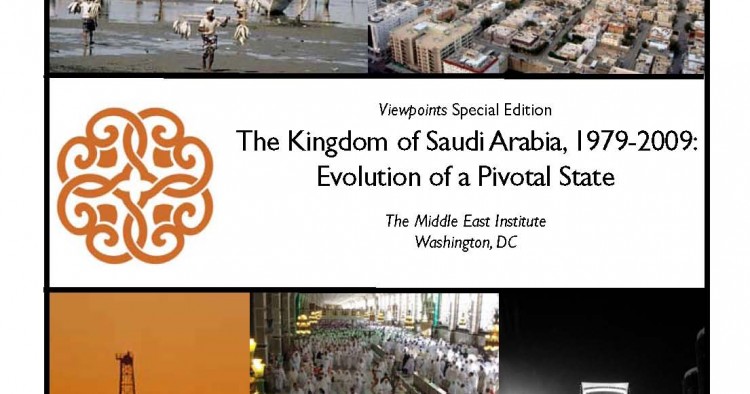Originally posted: October 2009
Though its national origins date from the mid-18th century, the current (third) Kingdom of Saudi Arabia is relatively new. Its establishment in 1932 marked the culmination of several decades of successful military and political efforts led by the Kingdom’s founder, ‘Abd al-‘Aziz bin ‘Abd al-Rahman Al Saud.
Popular misconceptions of Saudi Arabia abound. They are marked by static, sometimes distorted images of the country and its people: the varied Saudi landscape misrepresented in sharp dichotomous snapshots of oil rigs and vast stretches of empty desert; the diverse Saudi population miscast either as backward camel herders and desert dwellers or portly princes luxuriating in opulent palaces; and the misidentification of Wahhabism and contemporary jihadism, and thus the mischaracterization of Saudis as terrorists or as purveyors of terrorism.
Most people other than Saudis themselves are unaware of — much less able to fathom — the magnitude of the changes that have occurred inside the Kingdom, and the stunning rapidity with which they have occurred. Much of this change has taken place over the past three decades — not all of it the handiwork of Saudis themselves, and by no means all of it positive.
Today, the Kingdom of Saudi Arabia has a population of more than 28 million, 82% of whom live in urban areas. The Kingdom dominates the Arabian Peninsula economically, politically, and militarily. The Saudi presence and influence radiates across the region and throughout the world in the form of investment capital, media, foreign aid, the championing of Muslim causes, and the conduct of diplomacy. Saudi Arabia, which possesses about 20% of the world’s petroleum reserves, is the largest petroleum exporter and plays a leading role in OPEC.
The breathtaking pace of Saudi Arabia’s modernization and ascent on the world stage has come at a cost. It has unleashed social forces that cannot easily be controlled. And it has fuelled fears and grievances that have proved impossible to ignore, yet difficult to manage.
The year 1979 is an important marker. The clutch of events that took place in the wider region during that year — the Iranian Revolution, the signing of the Camp David Treaty, the second “oil shock,” the launching of General Zia ul-Haq’s Islamization program in Pakistan, and the Soviet invasion of Afghanistan — profoundly shaped Saudi Arabia’s subsequent regional and international role, and fed back into Saudi social and political relations in ways that continue to be felt.
The year was not without momentous events within Saudi Arabia’s borders as well. On November 20, 1979, Juhayman Sayf al-‘Utaybi and several hundred armed Salafists — including Saudis, Egyptians, Kuwaitis, Yemenis, and Iraqis — seized the al-Masjid al-Haram (Grand Mosque) in Mecca, the holiest site in Islam, as thousands of worshippers were gathering for the dawn prayer. The same month, Shi‘ite protests erupted in the oil-rich eastern region of the country. The disturbing simultaneity of these challenges to the legitimacy of the Saudi system of rule led, among other things, to the restructuring of relations between the political leadership and the ‘ulama’ and to the securitization of the state.
Taken together, these events both inside and outside the Kingdom were harbingers of things to come — of an economy still heavily dependent on oil rents; a social contract anchored in lavish subsidies and welfare services that are increasingly difficult to sustain; deeply conservative religio-cultural mores that cannot be insulated from the forces of globalization; and the vexing issues of managing domestic political dissent while maintaining a “special relationship” with the United States in the face of a diffuse radical Salafist movement worldwide and the expansion of the Islamic Republic of Iran’s regional power and influence.
This collection of 21 essays, the fifth of six special editions of MEI Viewpoints commemorating the momentous events of 1979, seeks to shed light on some of the important developments in Saudi Arabia’s domestic and external affairs since then.
The Middle East Institute (MEI) is an independent, non-partisan, non-for-profit, educational organization. It does not engage in advocacy and its scholars’ opinions are their own. MEI welcomes financial donations, but retains sole editorial control over its work and its publications reflect only the authors’ views. For a listing of MEI donors, please click here.













